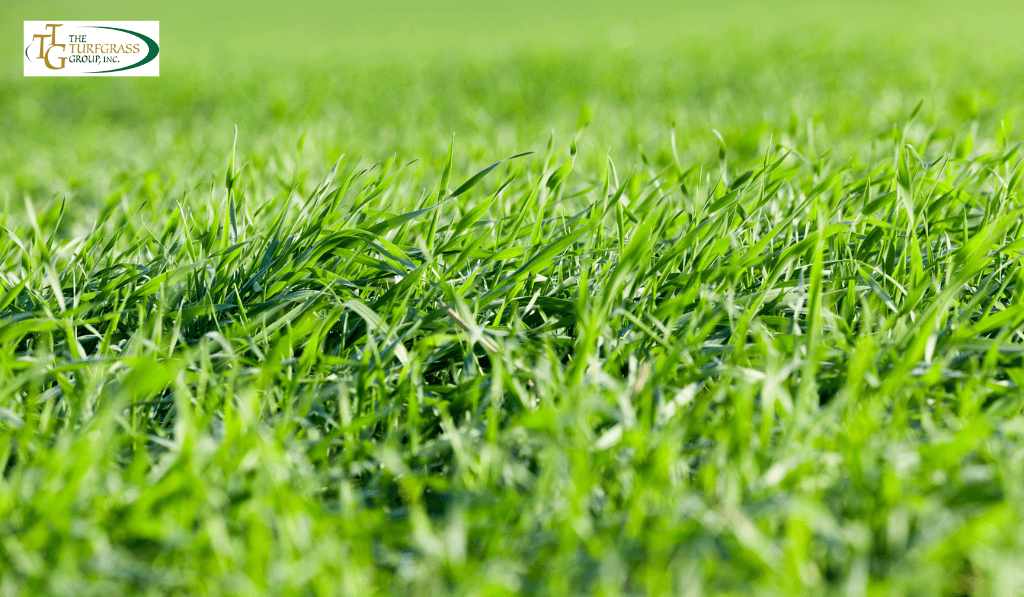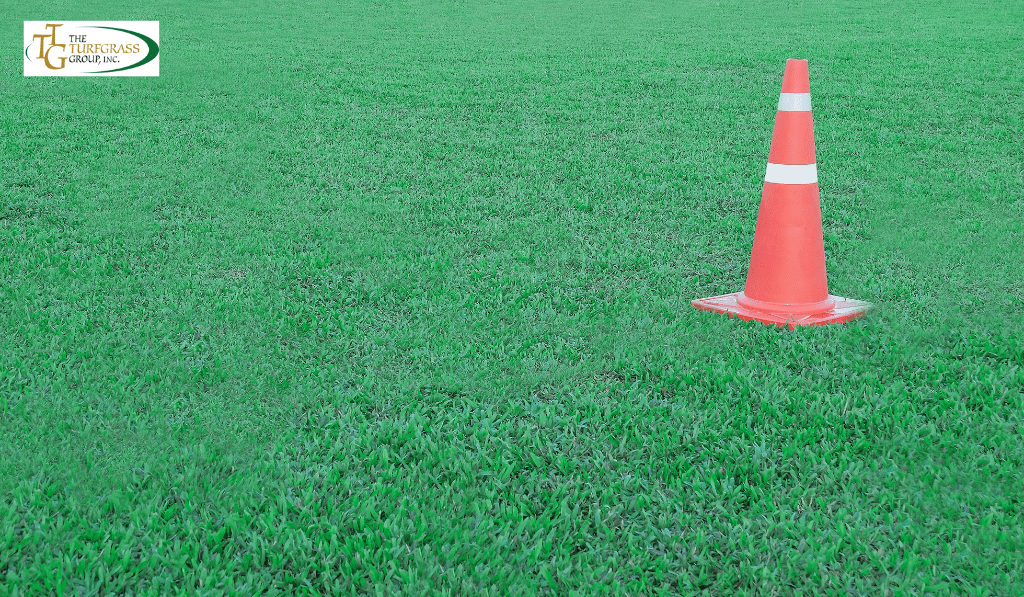
Bermudagrass turf is not just a patch of green; it’s a testament to resilience and adaptability in lawns.
If you aim for a lush, vibrant green carpet in your yard, understanding the secrets to thriving Bermudagrass turf is essential.
The Bermuda Advantage
A Resilient Beginning
From the very first seed, Bermudagrass declares its resilience.
Its tenacity allows it to flourish in diverse climates, making it a preferred choice for lawns in various regions.
This grass variety can withstand heat and drought, making it a go-to option for those seeking a low-maintenance yet visually appealing lawn.
Sunshine’s Best Friend
Bermudagrass loves the sun, and the feeling is mutual.
This grass variety has an innate ability to soak up the sun’s energy and convert it into a vibrant, green spectacle.
So, if your lawn basks in sunlight for the better part of the day, Bermudagrass is your ideal companion.
Planting the Seeds of Success.
Strategic Seeding
When diving into the world of Bermudagrass, start by choosing the suitable seed variety.
Opt for a high-quality blend that aligns with your region’s climate.
Planting during the warm season is crucial, allowing the seeds to germinate and establish themselves effectively.
A Soil Affair
Bermudagrass is not overly demanding, but it does appreciate well-drained soil.
Prioritise soil preparation, ensuring it’s nutrient-rich and not prone to waterlogging.
This grass variety doesn’t mind a slightly acidic to neutral pH, so aim for a soil environment that complements its preferences.

Watering Wisdom
Drought-Tolerant, Not Drought-Proof
While Bermudagrass boasts impressive drought tolerance, regular watering is still essential, especially during dry spells.
Deep, infrequent watering encourages the grass to develop deep roots, enhancing its resilience during periods of water scarcity.
Morning Dew, Evening Brew
Timing matters when it comes to watering Bermudagrass.
Opt for early morning or late evening sessions to minimise water loss due to evaporation.
It conserves water and ensures that the grass receives optimal hydration when it needs it the most.
Mowing Matters
The Goldilocks Cut
When it comes to mowing Bermudagrass, precision is critical.
Aim for a mowing height between half to one inch, keeping it shorter during the active growing season.
Regular mowing helps control thatch buildup and encourages lateral growth, resulting in a denser, healthier turf.
The Rule of Thirds
Adopt the one-third rule when mowing Bermudagrass.
Remove up to one-third of the grass height in a single mowing session.
This practice prevents grass stress and promotes a steady, consistent growth pattern.
Fertilization Fundamentals
Feed for Success
Bermudagrass is a voracious feeder, so it is paramount to provide it with the proper nutrients.
Choose a balanced fertilizer with a nitrogen-phosphorus-potassium (NPK) ratio that suits Bermudagrass’s needs.
Regular but controlled fertilization ensures a steady supply of essential nutrients for optimal growth.
The Timing Tango
Timing matters in the world of fertilization.
Aim for a schedule that aligns with Bermudagrass’s active growing season, typically during late spring to early fall.
Over-fertilization can lead to excessive growth, so stick to the recommended application rates.

Combatting Common Challenges
Weed Woes
While Bermudagrass is resilient, it’s not immune to weed invasions.
Regular inspections and timely weed control measures are crucial.
Adopt a proactive approach, preventing weeds from establishing a foothold in your vibrant Bermudagrass turf.
Pest Patrol
Keep an eye out for potential pests that may disrupt the tranquility of your Bermudagrass haven.
Grubs, armyworms, and mites are common adversaries, but early detection and targeted treatments can keep these nuisances at bay.
In conclusion,
“Ready to transform your lawn into a lush paradise? Dive into the secrets of thriving Bermudagrass turf at our blog!
From strategic seeding to mowing mastery, we have the tips for a vibrant green carpet.
Visit our website, The Turf Grass Group, and let’s embark on a journey together to create a resilient and visually stunning Bermudagrass haven.
Your dream lawn awaits – let the turf magic begin!”
FAQs
Q: Is Bermudagrass suitable for all climates?
A: Bermudagrass is known for its resilience and adaptability, making it suitable for various climates. It thrives in diverse conditions, including regions with hot temperatures and occasional droughts.
Q: What is the best time to plant Bermuda Grass seeds?
A: Plant Bermudagrass seeds during the warm season. It allows for optimal germination and establishment. Choose a high-quality seed blend that suits the climate of your region.
Q: How much sunlight does Bermudagrass need?
A: Bermudagrass loves full sunlight. If your lawn receives ample sunlight throughout the day, Bermudagrass is ideal for achieving a lush and vibrant green carpet.
Q: How often should I water Bermudagrass?
A: While Bermudagrass is drought-tolerant, regular watering is essential, especially during dry spells. Aim for deep, infrequent watering sessions. Watering in the early morning or late evening helps minimize water loss due to evaporation.
Q: What is the recommended mowing height for Bermudagrass?
A: Aim for a mowing height between half to one inch for Bermudagrass, especially during the active growing season. Adhere to the one-third rule – never remove more than one-third of the grass height in a single mowing session.
Q: How often should I fertilize Bermudagrass?
A: Bermudagrass is a voracious feeder. Use a balanced fertilizer with a nitrogen-phosphorus-potassium (NPK) ratio that suits its needs. Fertilize regularly but ensure controlled application rates. Timing matters; fertilize during the active growing season.
Q: How can I prevent weed invasion in my Bermudagrass turf?
A: Regular inspections and timely weed control measures are crucial. Adopt a proactive approach to prevent weeds from establishing in your vibrant Bermudagrass turf.
Q: What pests should I watch out for in Bermudagrass turf?
A: Watch for pests like grubs, armyworms, and mites. Early detection is critical, and targeted treatments can help keep these nuisances at bay.
Q: Can Bermudagrass be grown in any soil?
A: Bermudagrass is not overly demanding but thrives in well-drained soil. Prioritize soil preparation to ensure it is nutrient-rich and not prone to waterlogging. Aim for a slightly acidic to neutral pH environment.
Q: Is there a risk of over-fertilizing Bermudagrass?
A: Yes, over-fertilization can lead to excessive growth. Stick to recommended application rates and fertilize during the active growing season to provide a steady supply of essential nutrients for optimal Bermudagrass growth.